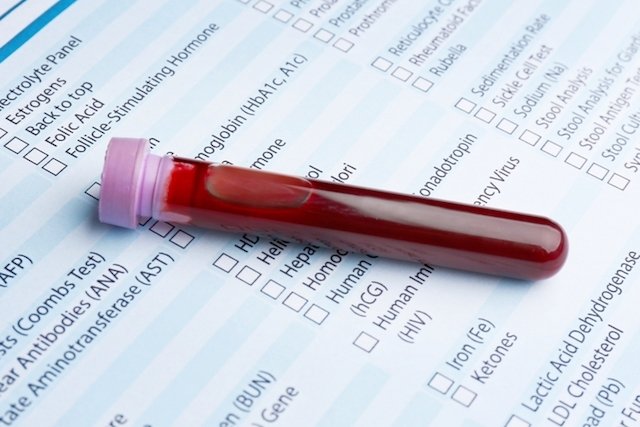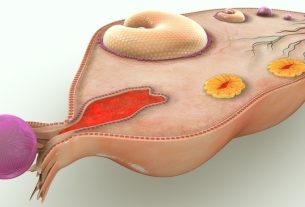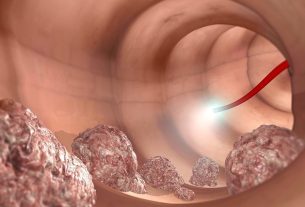Gamma glutamyl transferase, or Gamma GT, is an enzyme produced in the pancreas, heart and liver, which is generally elevated in the blood when there is some change in one of these organs, such as pancreatitis, heart attack or cirrhosis, for example.
To confirm or rule out the diagnosis of liver and biliary problems, the doctor may also request the measurement of TGO, TGP, bilirubin and alkaline phosphatase, which are more specific to liver problems or biliary obstruction.
The Gamma GT test can be requested both as a routine test and when pancreatitis is suspected, for example. However, this test is more common in people with suspected cirrhosis, fatty liver or who use alcohol excessively.

Reference value
The normal GT range value may vary depending on the laboratory, but generally ranges between 9 and 36 IU/L in women and 12 – 64 IU/L in men.
Do you have questions about your exam results?
The values of this blood test should always be evaluated by a hepatologist or general practitioner, however, some changes are:
Gama GT alto
A high gamma glutamyl transferase (Gamma GT) value usually indicates the presence of a liver problem, such as:
- Chronic viral hepatitis;
- Liver tumor;
- Cirrhosis;
- Decreased blood circulation to the liver;
- Excessive consumption of alcohol or drugs;
- Intake of medications, such as phenobarbital, phenytoin or warfarin.
However, it is not possible to know the specific problem, and it is necessary to carry out other tests such as computed tomography or ultrasound, for example, in addition to other laboratory tests.
Read too: Tests to evaluate the liver: blood, imaging and biopsy
In some rarer cases, these values may also be altered due to diseases unrelated to the liver, such as heart failure, diabetes or pancreatitis.
Low GT range
A low GT range value does not normally indicate any type of problem, and is even a sign that there is no change in the liver.
However, if the GT gamma value is low and the alkaline phosphatase value is high, for example, it may indicate bone problems, such as vitamin D deficiency or Paget’s disease, and it is important to carry out further tests to evaluate this possibility.
How to prepare for the exam
The test must be carried out after fasting for at least 8 hours, as GGT levels can decrease after meals. Furthermore, you should avoid consuming alcoholic beverages 24 hours before the exam, as they may alter the result. Some medications must be suspended, as they can increase the concentration of this enzyme.
It is also important to communicate when the last time an alcoholic drink was drunk was so that it can be considered when analyzing the results, as even if it was not in the 24 hours prior to the test, there may still be an increase in the GGT concentration.
When to take the Gama GT exam
This type of exam is done when liver damage is suspected, especially when there are symptoms such as:
- Marked decrease in appetite;
- Vomiting and nausea;
- Lack of energy;
- Dor abdominal;
- Yellow skin and eyes;
- Dark urine;
- Pale stools, like putty;
- Itchy skin.
In some cases, this test may also be requested to evaluate people who are following alcohol cessation therapy, as, if they have consumed alcoholic beverages in the last few days, the values will be altered.
We regularly update our content with the latest scientific information, so that it maintains an exceptional level of quality.
Bibliography
- CLEVELAND CLINIC. Gamma-Glutamyl Transferase (GGT) Test. Disponível em: <https://my.clevelandclinic.org/health/diagnostics/22055-gamma-glutamyl-transferase-ggt-test#results-and-follow-up>. Acesso em 09 mai 2023
- MEDILINEPLUS. Gamma-glutamyl Transferase (GGT) Test. Disponível em: <https://medlineplus.gov/lab-tests/gamma-glutamyl-transferase-ggt-test/#:~:text=If%20your%20results%20show%20you,tests%20help%20diagnose%20bone%20disorders.>. Acesso em 09 mai 2023

Sign up for our newsletter and stay up to date with exclusive news
that can transform your routine!
Warning: Undefined array key "title" in /home/storelat/public_html/wp-content/plugins/link-whisper-premium/templates/frontend/related-posts.php on line 12
Warning: Undefined array key "title_tag" in /home/storelat/public_html/wp-content/plugins/link-whisper-premium/templates/frontend/related-posts.php on line 13



